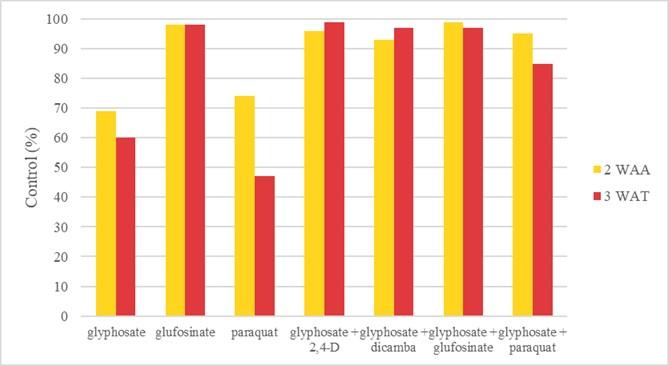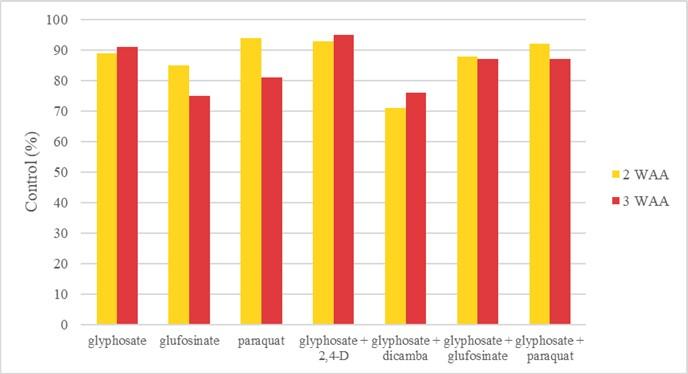How’s That Burndown Looking?


*Glyphosate containing treatments consisted of 20.5 fl. oz./A Roundup PowerMax3®; glufosinate containing treatments consisted of 43 fl. oz./a Liberty 280®, paraquat containing treatments consisted of 3 pt/A Gramoxone SL 2.0®, 2,4-D containing treatments consisted of 2 pt./A Enlist One®, and dicamba containing treatments consisted of 12.8 fl. oz./A Engenia®
*Ammonium sulfate (8.5 lb./A) was included in all treatments except the glyphosate + dicamba treatment, nonionic surfactant (0.25% v/v) was included with 2,4-D and dicamba treatments, crop oil (1% v/v) was included with paraquat treatments.
*Treatments were applied using Turbo Teejet 11002 nozzles at spray volume of 15 gal/A.
In last month’s issue of Agronomy News, I discussed considerations for glyphosate-based burndown programs. This month I wanted to share some of my results using similar programs to manage a rye (Fig. 1) and hairy vetch (Fig. 2) cover crop. Treatments were applied on April 11, and consisted of glyphosate, glufosinate, paraquat, glyphosate + 2,4-D, glyphosate + dicamba, glyphosate + glufosinate, and glyphosate + paraquat. Currently, this is what I am seeing:
- Glyphosate tank mixed with 2,4-D, dicamba, and glufosinate are doing an excellent job controlling hairy vetch, and glufosinate alone is providing similar control (Fig 3.);
- Vetch control appears to be declining with individual treatments of glyphosate and paraquat, as well as the mixture of the two (Fig. 4);
- Glyphosate + 2,4-D is doing an excellent job controlling cereal rye (Fig. 3b), but control with glyphosate alone has improved (Figs. 4a, 4b).
As previously discussed, the same herbicide program may not have the same desired effect on all species. Here are some things to remember.
- There are certain species where control with glyphosate can be difficult, even if those species are not classified as being glyphosate-resistant. Additional trials from the Mid-Atlantic have also indicated lower vetch control with glyphosate alone (Figs. 4a, 4b) compared to glyphosate tank mixtures (Figs. 3b, 3c, 3d).
- Group 4 herbicides such as 2,4-D and dicamba, will not control grasses. In addition, including dicamba in a tank mix with glyphosate has been shown to reduce glyphosate’s ability to control grasses (Fig. 3c).
- Contact herbicides such as glufosinate and paraquat require good spray coverage for optimal control. If plants are too large, if spray volume is too low, or if nozzles do not provide adequate spray coverage, then plants can regrow (Figs. 4c, 4d).


This article appears in May 2023, Volume 14, Issue 2 of the Agronomy News.